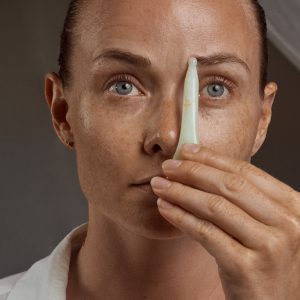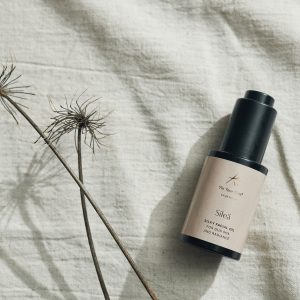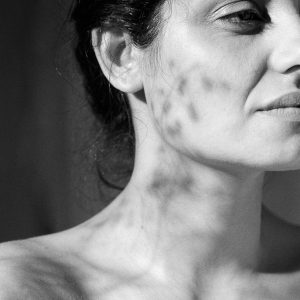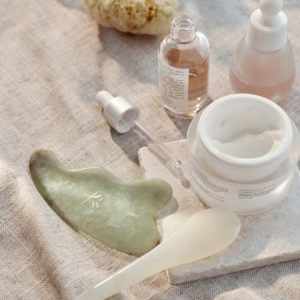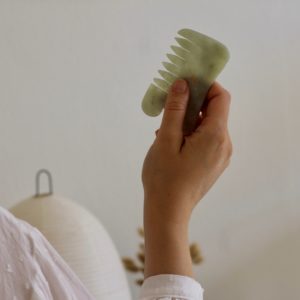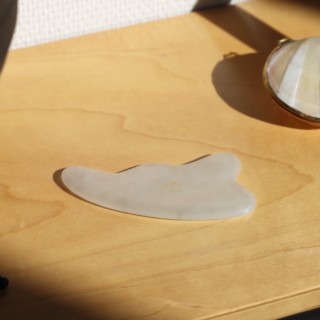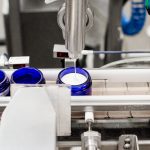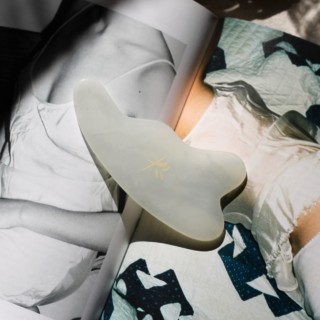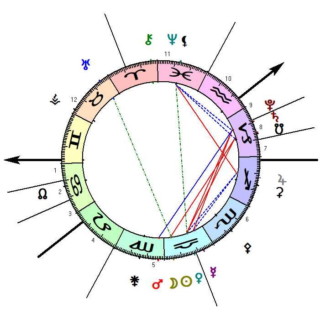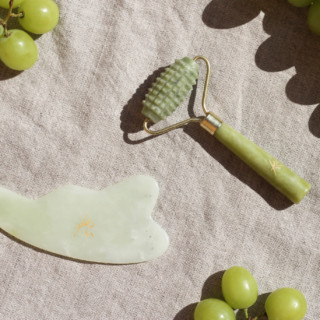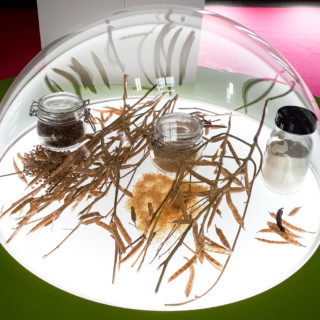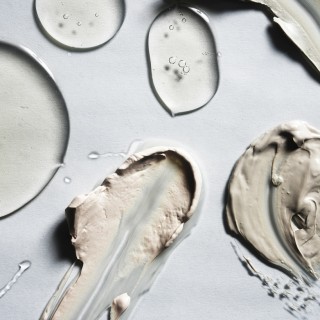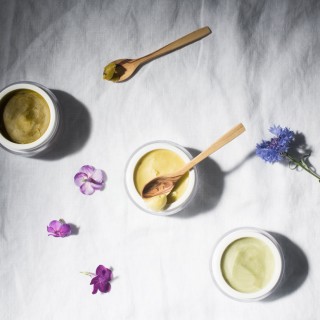A facial gua sha is a natural alternative to cosmetic injectables, which tightens, revitalizes and brightens the skin and effectively reduces puffiness.
I recently launched a set of gua sha tools under my Yin Your Skin® concept. I’ve already been sharing plenty of gua sha tips over on Instagram (you will find my tips under ‘gua sha’ in highlights), and it’s now time to spill the beans on the incredibly effective method also over on the blog.
Gua sha is a self care method that has been in use in Chinese medicine for more than a thousand years. It is used to treat a variety of issues like the flu, migraine, back ache and digestion problems – the list goes on. There is plenty of scientific research to back up claims of the effectiveness of gua sha – by no means is it some phony cure.
Gua sha involves rubbing the treated area (gua = to scrape, scrub) with a flat tool that’s usually made of jade, bian stone or bone. You could even use a spoon or jam jar lid, but a purpose-designed tool does boost the treatment.
Red spots (sha=reddish rash, petechiae) appear on the treated area of skin, which can look rather shocking if you do an image search in google. In reality, treatment isn’t that rough and doesn’t feel unpleasant. Blockage of energy in the treated area causes ‘sha’ to rise to the surface of the skin pretty easily, and marks will fade within 3-4 days. Sha means releasing the heat that causes a blockage.
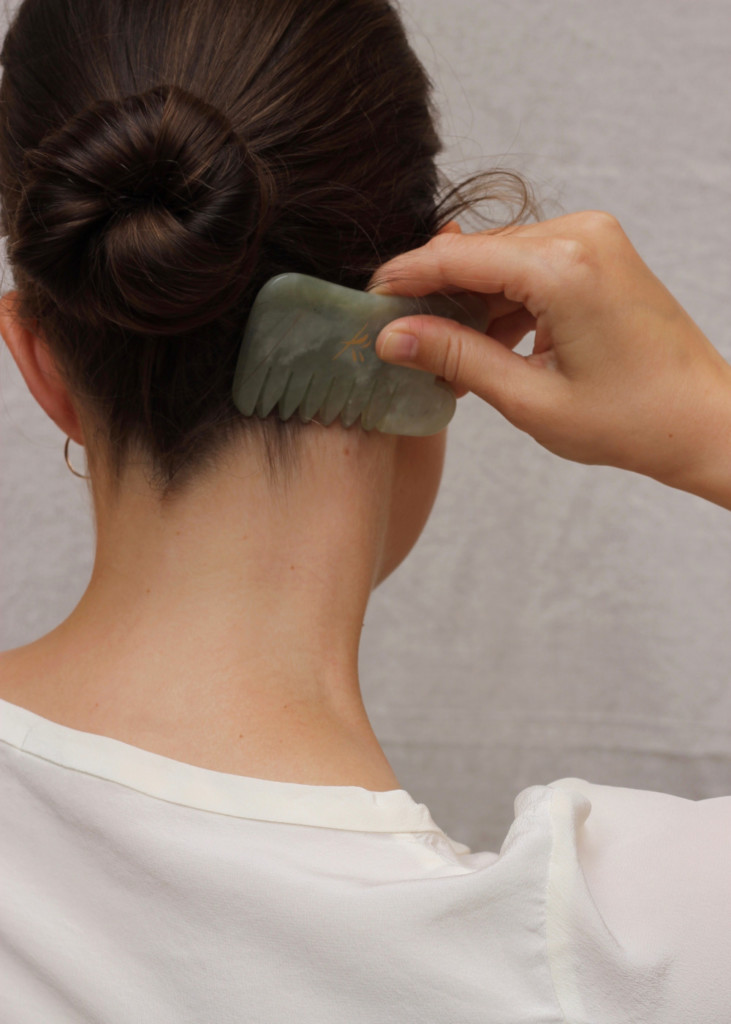
Gua sha improves circulation in the treated area by up to 400%, improving the flow of nutrients, oxygen and lymph fluids, releasing tension and alleviating aches and pains. Although the impacts of gua sha can be explained by western medicine, in Chinese medicine, gua sha simply improves the qi –the flow of life energy in channels known as meridians. Chinese medicine sees everything as qi, also as the force behind blood circulation.
Gua sha is usually performed for the body, but it can also be done on the face and head, as meridians traverse the entire body, including the face and head, interconnecting all body parts and functions.
But now to facial gua sha. It differs a little from traditional Chinese gua sha, as it merges traditional gua sha and elements of connective tissue massage and lymph massage. In other words, a facial gua sha has been developed specifically as a beauty treatment. Traditional gua sha can be done on the face, too (avoiding sha on the face), but it’s important to understand that these are two distinct treatments.
A facial gua sha improves the circulation of the skin and flow of lymph fluids, which boosts skin renewal, as the nutrient and oxygen supply of tissues and collagen production improve. It also stimulates fibroblasts, which are responsible for producing collagen, elastin and lubricating matrix. Tension and blockages in fascia become released. Gua sha can also be used to release muscle tension – emotions affect facial muscles and fascia, which can result in wrinkles on the face. Tension of the masseter is a common occurrence for many, which can cause swelling. Gua sha penetrates deep inside the skin, whereas skincare products only target the surface of the skin. Meridians (or the fascia network) transport impacts from the face to the entire body.
Gua sha smoothens, tightens and creates a more sculpted contour for the face, especially around the jawline and cheekbones. I could go on about the benefits of a facial gua sha, but to summarize: it’s a real natural facelift that will make your whole face look healthier.

What drew me to facial gua sha in the first place were the visible effects evident already during and immediately after the first treatment, but accumulating along with regular treatments. I’ve been trained by Cecily Braden from the States, who has been training up beauty professionals in holistic skincare methods from 1994. I then continued my studies under Chinese medicine expert Clive Witham, who had a more traditional approach to gua sha. Most recently, I took part in tissue massage training by Anne Bramham, who has been an educator in the beauty industry for more than 40 years. For me, the training opened up completely new techniques also for gua sha.
Many have asked why the Yin Your Skin® gua sha tools don’t come with written or illustrated instructions for doing a gua sha. The answer is that you cannot learn the method by reading or looking at pictures. I have personal experience about this. You can learn the theory, but the method needs to be seen and felt in practice before practicing yourself. The reason I launched the gua sha tools was to teach how to treat your own face. It wasn’t about selling pretty tools that will look lovely on Instagram. Without knowing the method properly, you won’t get results and it will only be a passing fad.
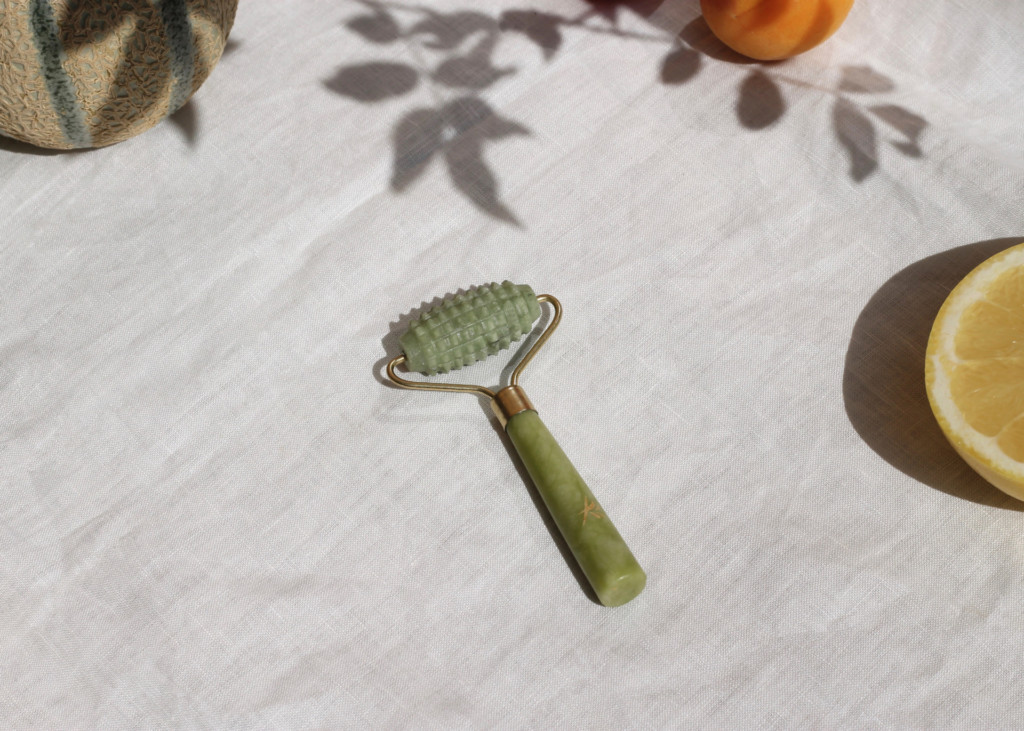
Facial gua sha is part of the Yin Your Skin® concept I launched in 2017, which merges yin yoga and skincare. Yin Your Skin® became an instant hit and I received plenty of requests for an online version for those unable to attend my workshops. Researching the astounding effects of yin yoga made me see that the skincare element of the concept still lacked something. When I first saw the effects of facial gua sha, I knew I’d found the missing piece. Redesigning the Yin Your Skin® concept, I realized I needed to make gua sha tools easily available and decided to launch my own products.
The tools don’t come with instructions because my mission is to inspire genuinely effective self care with gua sha as just one element. It’s not about selling products – they are a side thing. The Yin Your Skin® online course is a combination of yin yoga, meditation, skincare, basic facial gua sha and sound healing.
A facial gua sha is suitable for almost anyone, but there are some exceptions: it should be avoided if you have very thin and inflamed skin. Also any spots, raised moles, wounds, rashes and infections need to be left untreated, but you can work on the area below and around. Many skin issues require individual assessment on whether treatment is advisable and how it should be done. Gua sha can cause blemishes to appear at first, as removal of metabolic waste and circulation become invigorated, but they should fade along with regular treatment.
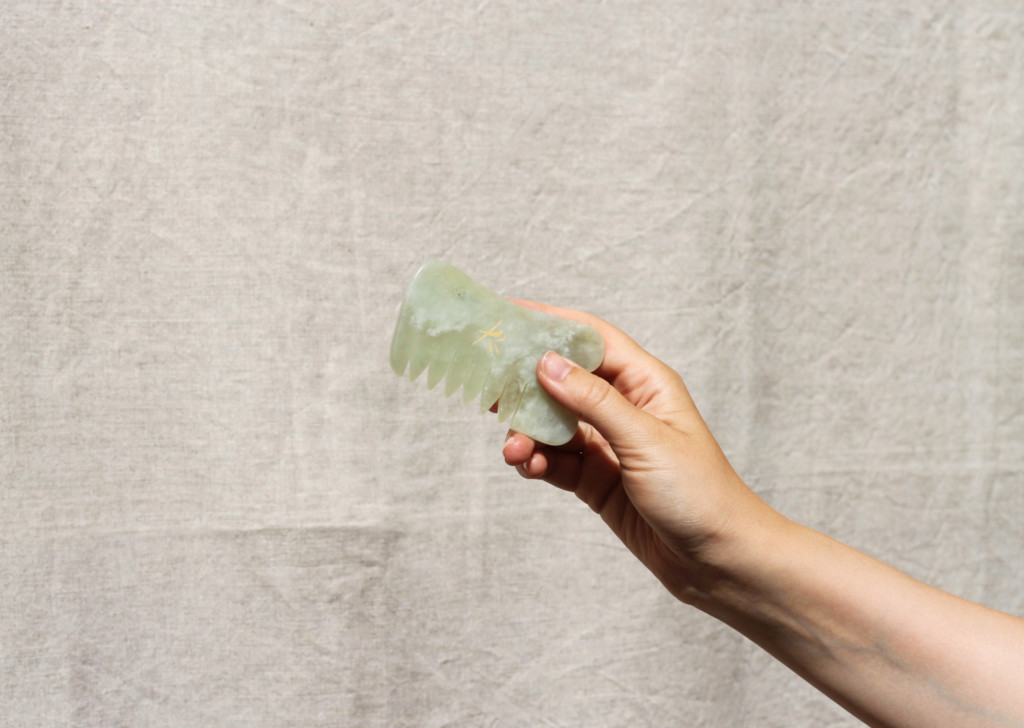
Yin Your Skin® gua sha tools
There are four different Yin Your Skin® gua sha tools available at the moment: comb, facial tool, spoon and roller. You will find the tools that are right for you by experimenting. They need to feel comfortable to hold. If your hand muscles tense up during use, the entire treatment suffers.
Clean your tools after each use with soapy water and dry carefully. You can also use a natural disinfectant. If using the tools to treat others, make sure to disinfect them extra carefully.
Gua sha comb
The gua sha comb is designed for the face, body and scalp. Suitable for the whole body from head to toe, it makes for a good general tool. The U-shaped end follows the natural contours of the jawline, cheekbones and front and back of the neck, while the long side works well for the décolletage, face and body. Combing the scalp feels divine, effectively releasing tension and stress.
Gua sha facial tool
The gua sha facial tool is shaped especially for treating the face. Smaller than a traditional gua sha comb, the tool with its notches and curves makes it a good aid for the facial bone structure, jawline, masseter, cheekbones and skin around the eyes. The tapered shape means the tool can be used on its side to scrape the base of wrinkles to enhance fading them. The thinner the tool, the more effective it is – the facial tool works well for treating wrinkles and sagging skin.
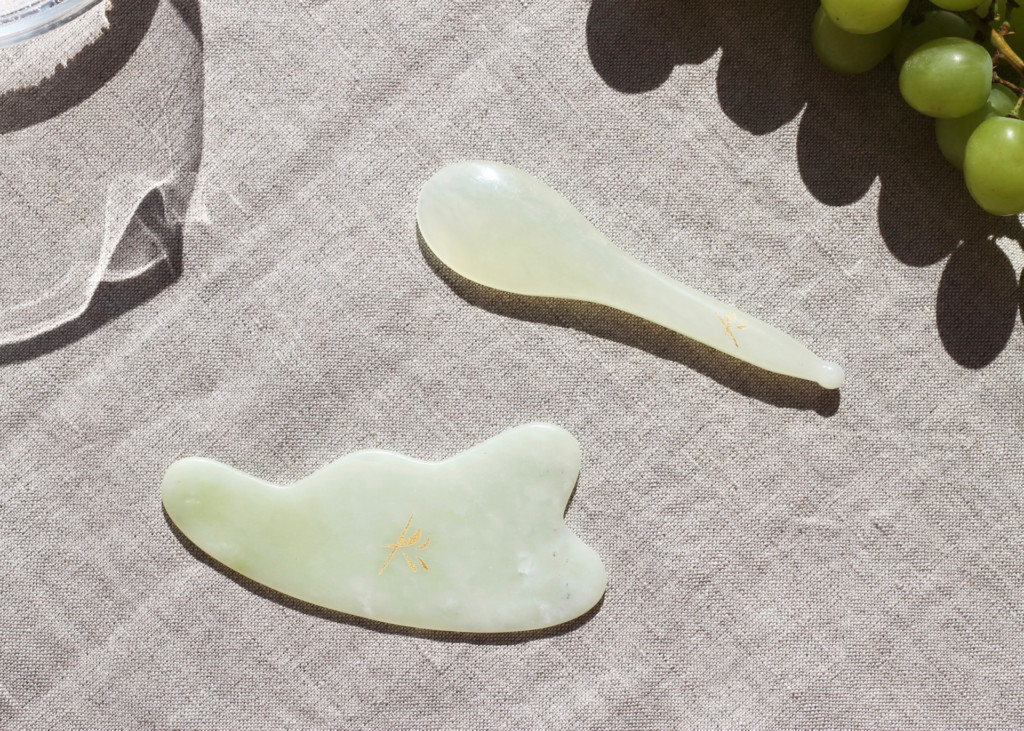
Gua sha spoon
The spoon-shaped gua sha tool is especially beneficial for activating lymph circulation and reducing puffiness. It is tool number one for the skin around the eyes. The spoon also works extremely well for treating the front and back of the neck as well as the décolletage, and can be used for the entire face. The side of the spoon can be used to scrape wrinkles to enhance their fading. The thin end brings an extra boost to treating wrinkles and sagging skin and makes it easy to treat the scalp. The other end is perfect for targeting acupuncture points. The spoon is the best choice for sensitive skin, as the shape ensures treatment can be done extremely gently.
Gua sha roller
The roller with spikes treats the face, front and back of the neck and décolletage. It invigorates circulation, improves collagen production and improves the absorption of skincare products into the skin without piercing the skin like microneedling, meaning it’s gentler and more hygienic. Skin rolling brightens the skin, removes puffiness, and serves as an intense wrinkle treatment for the décolletage, neck and face. The spiked roller can be used on a cleansed face before or after applying other skincare products or at the end of a regular gua sha treatment. It is not suitable for sensitive skin.
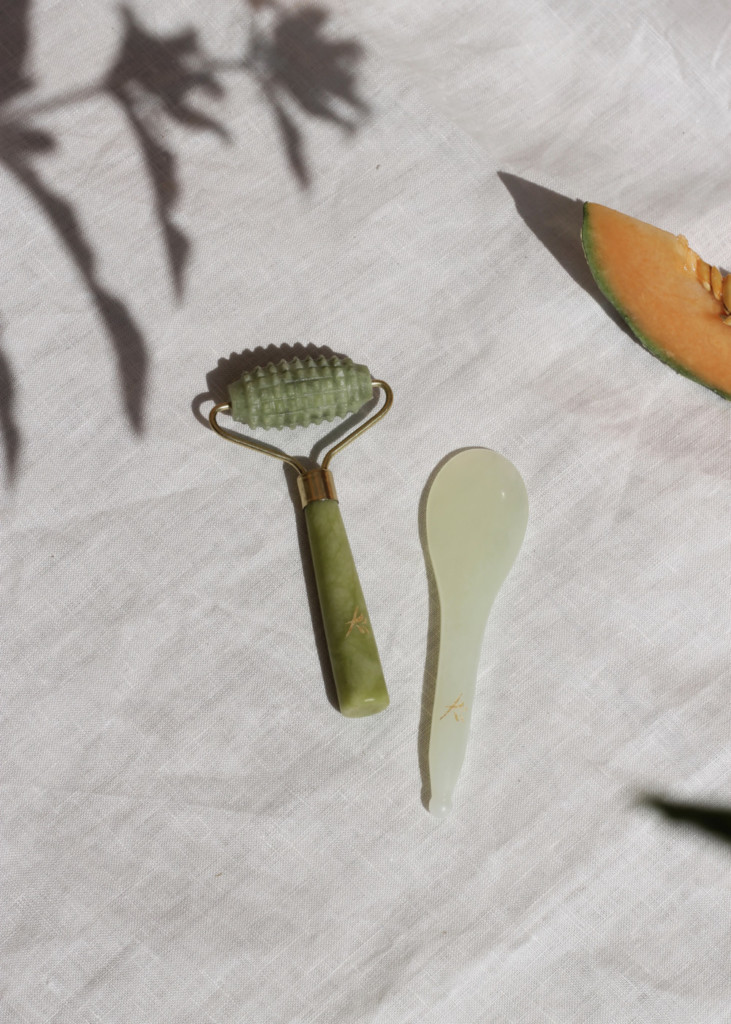
The origin of Yin Your Skin® gua sha tools
Yin Your Skin® gua tools are made from 100 % xiuyan-jade which comes from Xiuyan city, Liaoning province from China. Each tool has a certification of identification of their origin. The working conditions and safety in the minings are appropriate. To ensure the sustainability of jade and to repair the enviromental impacts of mining, there are several measurements which are done to repair for example the soil, plants and nature after the mining. A jade gua sha tool will last a lifetime, but will break if dropped on the floor. The Yin Your Skin® packaging is manufactured and assembled in Finland. Xiuyan-jade gua sha tool will last a lifetime if you don’t drop it on the floor.
This was facial gua sha in a nutshell. The next post will be about gua sha and acne. If you have any questions about gua sha, leave a comment below and I can then include some of them in a separate blog post.
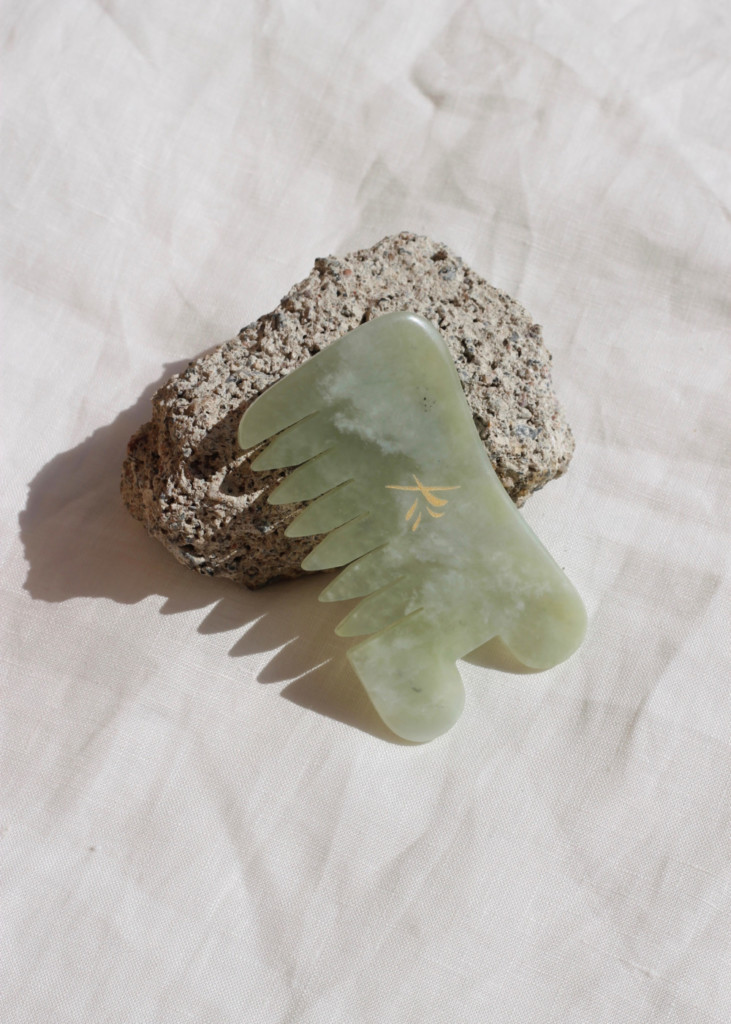
Photos Ina Nordbäck
Translation Rebecca Watson
